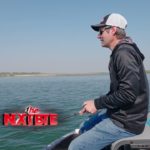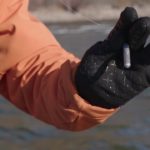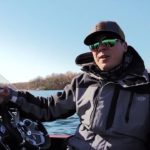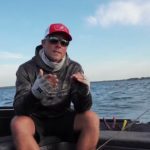Anything Goes for June Walleyes
 There’s no better time than now to do whatever you want and where you want to do it; to catch a walleye that is. If you like to jig in shallow water, great! Slowly work a live bait rig along a deep break line, no problem! How about tolling or casting crank baits? You bet. The thing is; whatever you’re favorite technique is it’s probably working right now.
There’s no better time than now to do whatever you want and where you want to do it; to catch a walleye that is. If you like to jig in shallow water, great! Slowly work a live bait rig along a deep break line, no problem! How about tolling or casting crank baits? You bet. The thing is; whatever you’re favorite technique is it’s probably working right now.
June is the perfect time for being on the water as the walleyes are usually far enough beyond the spawning period to be plenty active, including the larger and more elusive females. It’s also when the available baitfish can be running a little short which means ol’ marble eyes should be more apt to accept whatever it is you’re offering.
Everyone has a favorite or preferred way to catch walleyes and mine happens to be casting crank baits. Casting cranks for big walleyes in shallow water is exciting, and is where they can be expected to put up a respectable fight. It’s also visual and includes plenty of feel and you need to stay on your toes to be successful. Some of the better areas for casting cranks includes mud lines, shallow weed beds, and rock piles. One of the keys to a good crank bite in clear bodies of water is wind, which can really stir things up and draw fish in like a magnet, although it isn’t always necessary. On Devil’s Lake in North Dakota for example, walleyes are routinely caught in perfectly clear and calm water on crank baits. In fact a lot of the time you can actually see a fish move in and inhale your bait! No need for feel now, just set the hook and hang on.
Some of my top picks for working shallow water walleyes include #5 and #7 Shad Raps, as well as #7 and #9 Countdown Rapalas. Shad Raps have to be cranked down to get their running depth while the Countdown models will sink and allow you to cover different depths. I also like to use a seven foot spinning rod with a medium light action tip and no-stretch line like Power Pro or Fireline. The braids have virtually no memory which eliminates some of the hassle of casting cranks that spin like crazy on a cast.
 Most of the time a steady and slow retrieve is about all you need to get the job done and you really don’t have to be hitting or bumping into structure, you just have to be close.
Most of the time a steady and slow retrieve is about all you need to get the job done and you really don’t have to be hitting or bumping into structure, you just have to be close.
Another June consideration is the fact that it’s a time of transition, and is when late spring gives way to deeper summer patterns. Early on you might find walleyes running shiners on a sandy shoreline, or chasing immature white bass in the back end of a bay, or foraging along the deep edge of a shallow weed flat. As things heat up and fish move deeper you might find them hiding out on the edge of a deeper hump, or maybe stacked on an underwater point, or still holed up on the same weed edge. It really depends on what’s available. Lakes with more options are more complicated and is where you can find numerous and productive patterns happening simultaneously.
The move to deeper summer patterns doesn’t happen all at once and is usually more of a progression. When the time is right fish will start pulling out of shallower haunts and head for something a little deeper, but you’ll probably still find plenty of fish shallow. That’s what "transition" is all about and why you have to keep an open mind about what you’re trying to do. When chasing down transition walleyes don’t be afraid to make a radical move, especially if shallower patterns start to dry up. When the going gets tough the tough get going, and never let a little change get in the way of a great time.
While shallower patterns start out strong and slow down, the deeper ones start out slow and keep getting stronger and stronger and can peak by the end of the month. As more and more fish show up the odds of finding enough active walleyes around to make it worth your while increases greatly.
If there’s a downside to having so many good options is the fact that you may have a hard time deciding where to start. Where you start is probably less important than where you finish up. Nailing down the most productive pattern at any given time takes some work and keeping an open mind. Rather than locking in on a particular spot with a certain presentation you would be better off being prepared to do it all in a lot of different areas. Of course you could take whatever’s working at the time and run with it, but you might be missing out on something. Like maybe more fish, or bigger fish, or how about the fish of a lifetime?





